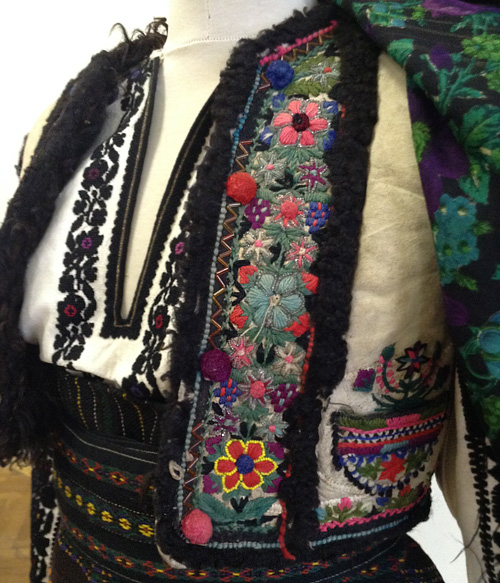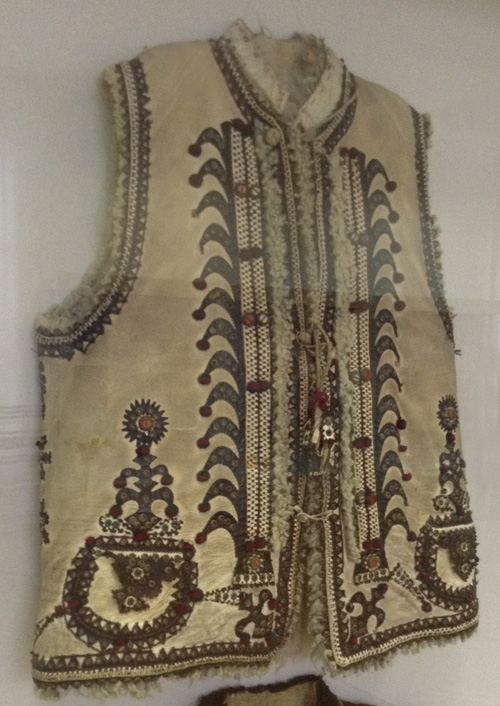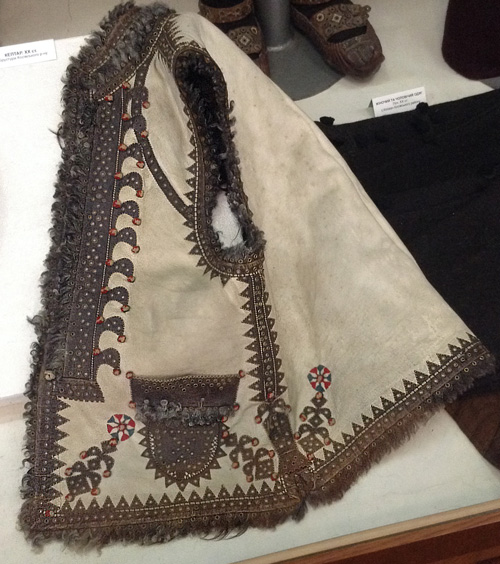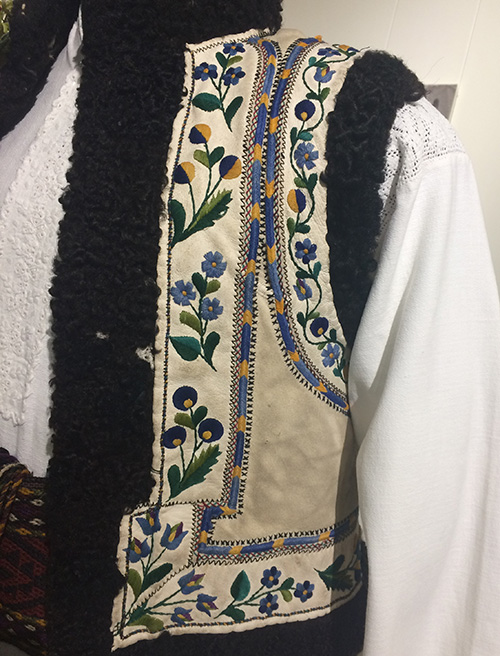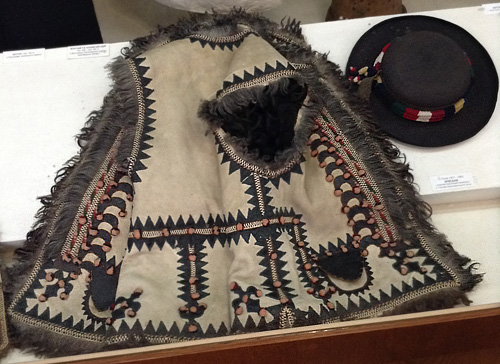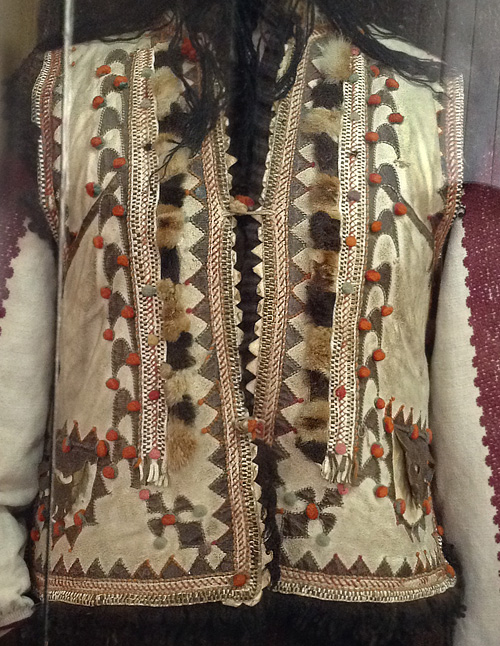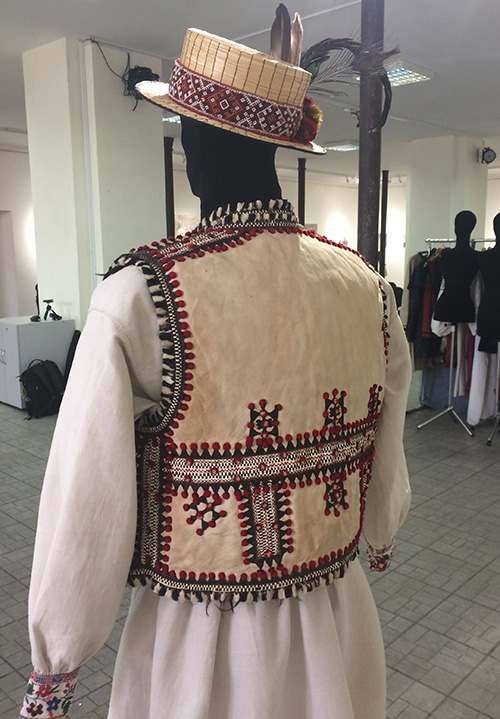 Leathercraft is one of the oldest handicrafts on Earth. And it is still a part of our life because we use a lot of leather and fur in our clothing. At the same time, we have many other choices, while our ancestors didn’t – they wore outerwear, shoes, and other indispensable accessories made from leather, skins, fur, and wool. This was the only way to survive. So, they learned to create masterpieces from such simple materials, and everything by hand only, with some primitive tools to help. These people were extremely skillful in leathercraft.
Leathercraft is one of the oldest handicrafts on Earth. And it is still a part of our life because we use a lot of leather and fur in our clothing. At the same time, we have many other choices, while our ancestors didn’t – they wore outerwear, shoes, and other indispensable accessories made from leather, skins, fur, and wool. This was the only way to survive. So, they learned to create masterpieces from such simple materials, and everything by hand only, with some primitive tools to help. These people were extremely skillful in leathercraft.
Leathercraft is one of the oldest handicrafts on Earth. People started to use animal skins and fur to warm up their bodies before any other materials. There was a time when fur and skins equaled money and were widely used as objects of trade. At first, people made the simplest clothes out of these materials, but later, they started to embellish them and create more elaborate pieces.
The leather garments were decorated with animal teeth and claws, metal plates, handmade beads, appliques, etc. By the way, similar decorations are used in folk costumes of many ethnic groups to this day. For example, in Ukraine, authentic outerwear was traditionally often made from sheepskins and wool, and a lot of such garments were adorned with metal plates and shaped decorations, metal eyelets, yarn pom-pons, various beads, leather appliques, and so on.
With time, people found out how to dye leather and how to finish it to preserve it longer. One of the rather effective but primitive methods of finishing leather was fumigation – specific plants were burned and pieces of leather were hung to absorb the smoke. This technique isn’t used anymore these days, but in the past, it helped to prolong the life of leather clothing.
Such leather items as shoes, belts, bags, jackets, and so on we can see in various countries around the world. The techniques used to create them changed and altered with time. And we still usually prefer natural leather shoes to faux leather or fabric footwear. So, leathercraft still lives and develops today.
Here are a few examples of vintage leatherwork from Ukrainian museums.
Wide leather belt called “cheres” from Ivano-Frankivsk region of Ukraine, the early 20th century. It is not just a cute and stylish accessory – it supported the torso during hard work, like weightlifting or logging
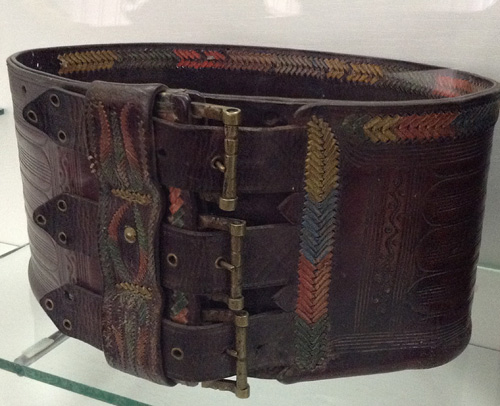
Small leather shoulder bag called "tashka" used by men in Western Ukraine in the 19th century. The front part of the bag is embellished with stamping on leather
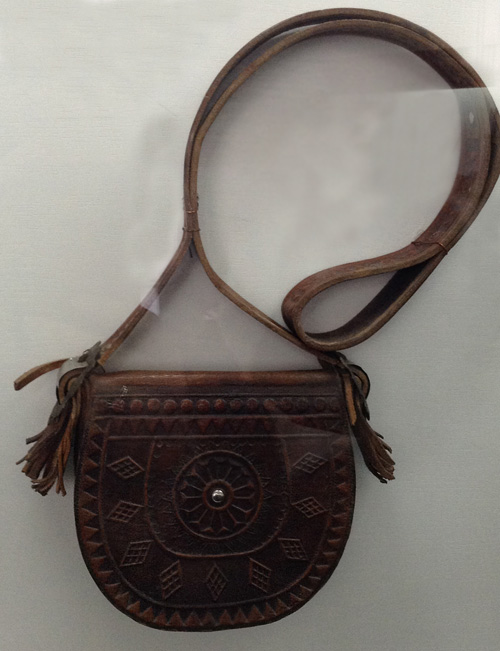
Lovely leather shoes called “postoly”. They’re richly adorned and look stunning. Only professional shoemakers specializing on postoly can produce them. These particular shoes are comparatively modern – made in the 20th century by Ukrainian craftsmen
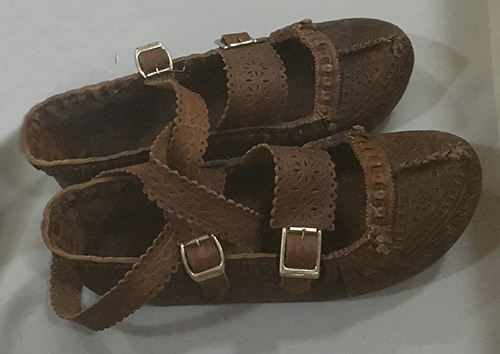
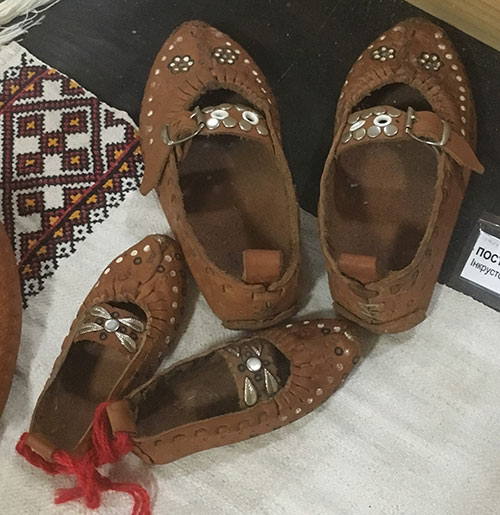
In the mountainous regions, people often were involved in cattle breeding and sheep breeding. And so, they had a lot of raw materials (leather, sheepskins, fur, etc) to use in the clothing making. In the Carpathian Ukraine, Romania, and Moldova, particularly, there is an outer garment – a traditional sheepskin vest. It was extremely popular in this area – practically every man, woman, or child had several such waistcoats in their wardrobe. Of course, we’re talking about simpler day-to-day vests, festive waistcoats were so expensive not many people could afford them. This garment was warm, comfy, tight-fitting, and beautifully decorated, especially festive vests.
Also, as we know, Carpathians wore sheepskin vests all year round, even in summer. It was a universal garment. We should remember that the mountainous climate is cooler and windier. Even when it rained (light rain, of course), people took their vests, turned them inside out, and wore them again – this helped to protect the body from getting wet quickly because sheep fur remains a bit greasy naturally (even after all the processing and finishing), so it is a bit waterproof. Besides, people protected the embellishments on the vest this way. They did the same when it poured as well, though, the waistcoat didn’t protect as effectively from heavy rain.
Also, there were bigger and warmer outerwear pieces – long coats made from sheepskin.
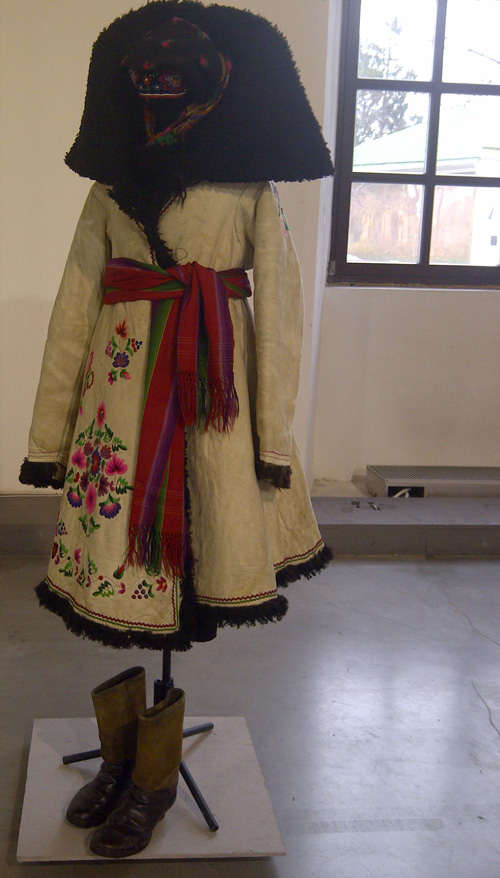
The sheepskins were turned inside out so that fur was close to the body and gave warmth. And the outer side of clothing was richly embellished to look pretty. Usually, it was so richly adorned, you hardly could see the white leather peaking from under all the décor.
It is said that the higher you go into the mountains, the more decoration you seen on clothes, the brighter the colors are, the more contrast there is in color combinations, and so on. Sometimes, you could see a person kilometers ahead (in the mountains, it is possible) by the shine and sparkle of her attire – no face and no figure even is seen yet, but the sun reflects from her clothing (decorated with gold and silver threads, foil elements, small mirrors, etc).
Also, these decorative elements on clothes had a deeply symbolic meaning. They were believed to protect the owner from evil. For example, the shapes of appliques were specific or embroidery patterns, etc. At the same time, every garment had a unique decoration, people took something typical for their village and added their own imagination to create something different from other pieces of clothes. There were no two identical vests or coats, even though the cut and main features were common.
Here is a number of vintage sheepskin vests from western Ukraine, the 19th – early 20th century.
